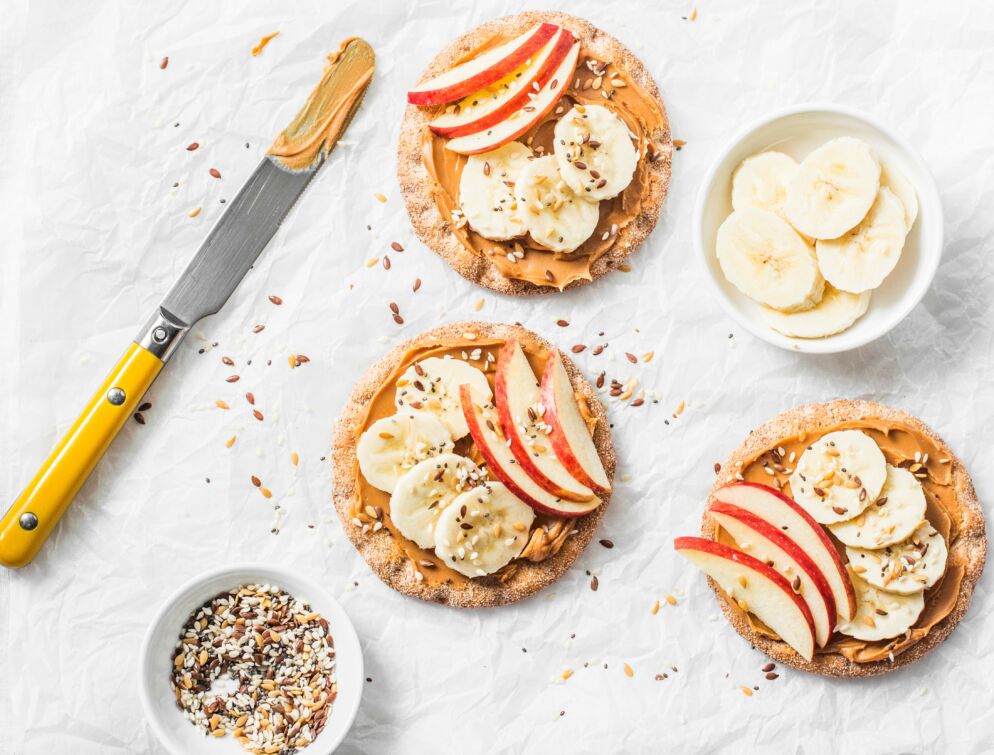
If the options at your child’s school cafeteria are lacking, it may be time to take matters into your own hands.
According to Centers for Disease Control (CDC), making sure kids eat right is critical for brain development, growth, bone growth, skin, teeth, eyes, the digestive system and immune health.
Many snacks marketed toward children are unhealthy—loaded with added sugars and high in salt content. Parents should always check the labels of their kids’ snacks because even foods we commonly think of as healthy, such as apple juice and fruit-flavored muffins, can contain a surprising amount of sugar.
There’s about 24 grams of sugar in a cup of apple juice compared to 26 grams of sugar in the same amount of Coca-Cola, according to the U.S. Department of Agriculture (USDA) and The Coca-Cola Company.
As parents and kids alike welcome a new school year, it’s important to remember that not all school lunch options are geared toward promoting a healthful lifestyle. If the options at your child’s school cafeteria are lacking, it may be time to take matters into your own hands.
Which foods make the best healthy snacks?
1 Apples with peanut butter is a great, classic snack packed with flavor and nutrition. There are a couple things to watch out for though—you want to avoid peanut butters with added sugar or hydrogenated vegetable oils. If your child has a peanut allergy, there are some healthy and tasty alternatives: soy butter, pea butter, almond butter and sunflower butter.
2 Carrots are popular with ranch dressing, but ranch is high in saturated fats and sodium. Instead of ranch, try pairing baby or sliced carrots with hummus, Greek yogurt or baba ganoush. Carrots are high in calcium and vitamin K, which support bone health.
3 Celery with peanut butter (see notes on peanut butter in No. 1) and raisins is an excellent snack with a satisfying crunch kids can appreciate. This snack combo has fiber, protein, vitamin B6, iron, potassium, copper manganese and boron. If your child is averse to raisins, pomegranate seeds are an attractive alternative with a firm, juicy texture and a sweet yet slightly tart taste.
4Small servings of cheeses like mild cheddar, mozzarella and cottage cheese are good for children because they’re not only tasty but also a source of protein, calcium and vitamins.
5 Hard-boiled eggs take time to prepare, but you can save time by making a big batch and keeping them refrigerated. Hard-boiled eggs have about 6 grams of protein each and are high in vitamins A and D, as well as calcium and iron.
Tip: After water reaches a boil, simmer the eggs for about 12 minutes; then, put them into icy water. After the eggs have cooled, refrigerate them with the shell on so they keep longer. When peeling the eggs, tap each egg on both ends on a hard surface. Then, start peeling from the end with the air pocket.
6 Simple fruit makes a great snack combo for kids and parents who are on the go. Apples, bananas, oranges, grapes and pears are all easy and nutritious. Just be careful not to overdo it, as some fruits can be quite sugary. The CDC recommends children eat between one and two cups of fruit each day, depending on their level of physical activity.
7 Yogurt is a great healthy snack with lots of protein and calcium, but many of the yogurts marketed toward kids have a lot of added sugars. Greek yogurt is a great alternative because it has more protein and less sugar than regular yogurt. Make this snack more interesting with a little honey or fresh fruit!
Note: Do not give honey to children who are younger than 1 year old; this poses a risk of botulism.
How to keep healthy snacks fresh in a lunchbox
Dairy
The best way to keep cheeses, yogurts and other dairy products in top shape is by using a reusable icepack and an insulated lunch bag to help keep them cool.
Fruits
For fruits, it’s important to leave them in their all-natural packaging if you want to keep them at their freshest. But if you must slice them, a little spritz of citrus juice like lemon, lime or orange can keep sliced apples and bananas from turning that unappealing shade of brown in the lunchbox. To keep whole fruits from bruising, wrap them in cloth to cushion them.
Nuts
It’s best to keep nuts in a sturdy Tupperware container rather than a bag to make sure they don’t get crushed. To keep nuts from drying out, store them in a cool place and use an ice pack.
Dips and Sauces
For everything from hummus to cream cheese, it can be hard to find a container with a lid that won’t pop off at the slightest bump. We recommend using a container with a lid that either screws on or is secured by tabs on all sides.







